Inclusive Design: The Bell Curve, the Starburst and the Virtuous Tornado
As the director of the Inclusive Design Research Centre, I have frequently been asked how inclusive design relates to data and evidence. The answer is complex and involves theorists from the 1800’s, how their theories have been applied to people, and phenomena that permeate many natural spheres. Let me explain…

If you take any group of people and you plot their individual needs and characteristics on a 3D multi-variate scatter-plot you get a starburst (also known as a “normal distribution”). Reduced and flattened to two dimensions it looks like a bell curve (you might recognize this from school grading days or any reference to groups that are “tails,” referring to the tapering ends of the bell curve). However, people are complex and diverse and best understood in three dimensions — thus a 3D scatter-plot.
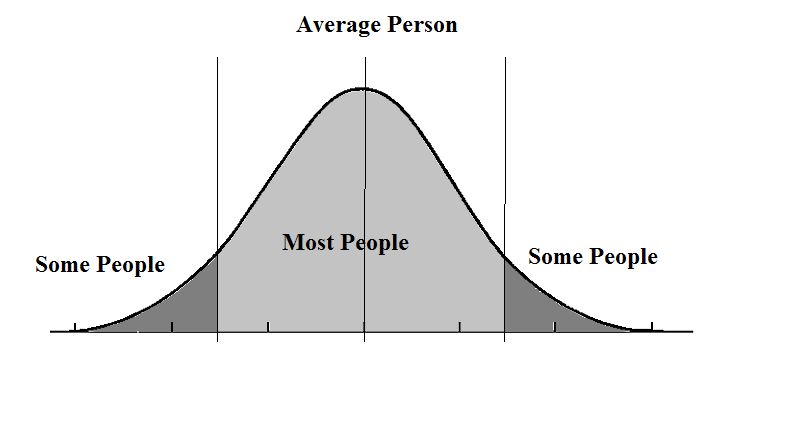
The starburst has a dense core where about 80% of the points cluster around the center, covering about 20% of the space. Spreading away from this central cluster are the remaining 20% of the points, covering about 80% of the space. These outer points are at greater and greater distance from each other. The outside edge of the starburst is jagged.
It is this naturally occurring distribution or pattern that Vilfredo Paretodiscovered in the late 1800’s, when he articulated what is now called the Pareto Principle or the 80/20 rule. Richard Kochlater applied the rule to the domains of business and commerce, asserting that you could encompass 80% of the needs by covering only 20% of the space, and thereby only expend 20% of the effort. This central cluster is the sweet spot of easy or quick wins and “low-hanging fruit”. When it comes to design, his advice was to ignore the “difficult 20%” (that take up 80% of the space and effort) and to focus on the sweet spot in the center.

For most of my career I’ve been dealing with the fall-out of this pervasive advice.
What happens if we ignore those 20%? What are we missing in ignoring 80% of the knowledge terrain? What happens if you find yourself among those “difficult 20%”?
First I should explain, who represents the “difficult 20%”? It is anyone that finds themselves at the margins, not served, too far from average, whose needs are not met. It is anyone that experiences a mismatch between what they need and what is available due to situation, birth, or accident. Any one of us could find our most critical needs to be part of the “difficult 20%” at any time, and when we least expect it.
Pareto and Koch’s edicts have influenced every aspect of our human society in the last two centuries, with escalating consequences for both the 20% and the 80%. Their advice has become inextricably linked with our sense of value, worth, truth and even fairness.
Boosted by Pareto’s contemporary Quetelet, who invented the notion of the average man, our markets have been designed to leverage economies of scale and address the needs of the 80%, (or the largest customer base), through mass production, mass marketing and quantified statistics. In the area of computing, this has become entangled with Moore’s law, escalating a digital divide. For the 80%, our digital devices have increased in functionality, reliability and availability, while decreasing in cost. If you find yourself among the 20% you will find the opposite is the case. With no economies of scale, cost increases while availability is precarious. Only the courageous business ventures into the vast terrain of the “difficult 20%”. As most digital functions rely on connectivity and interoperability, and businesses are more interested in competing than collaborating; the functionality and reliability of the digital products for the 20% disintegrates.
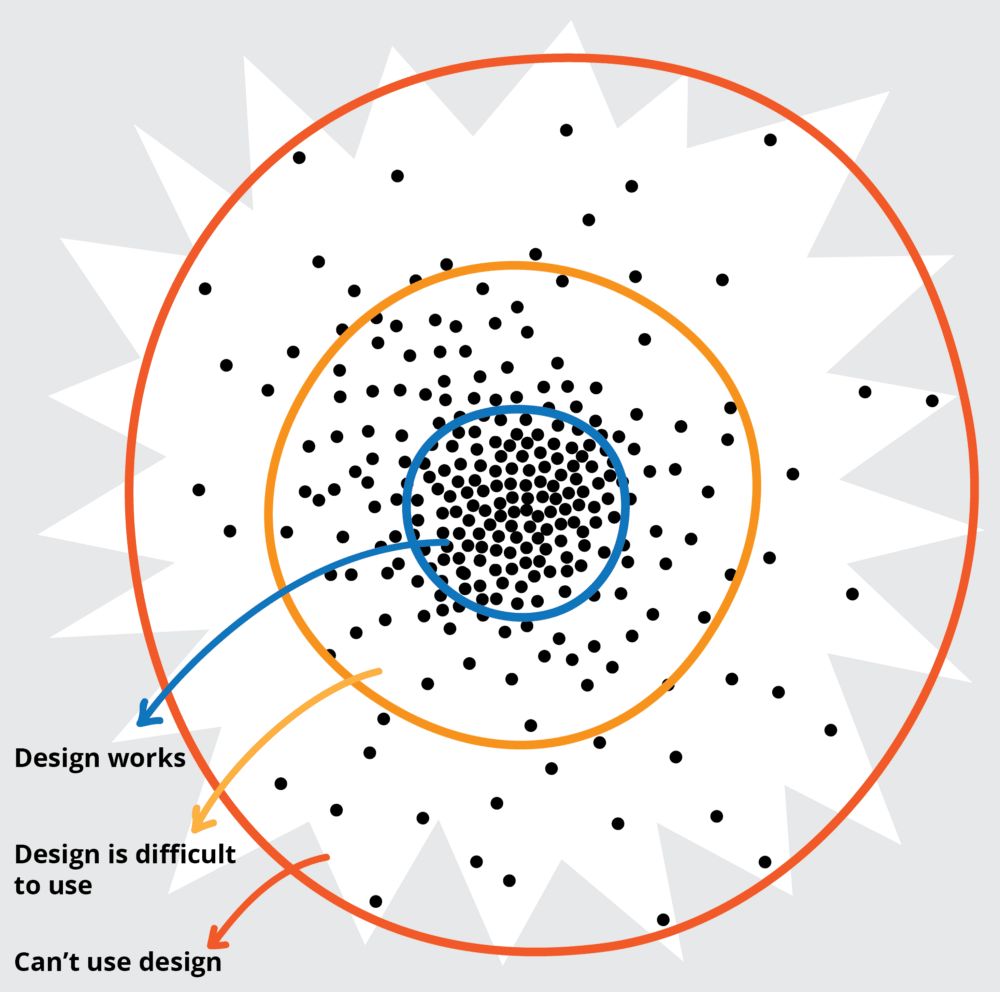
This same pattern is found not just in the products but in the necessary training and maintenance of the devices. If you lose your sight or your dexterity, it may cost you ten times as much to get online. Many functions you take for granted won’t be available to you. When you devote extensive time and energy to learning a specialized process, you may find that investment futile, because the developer will often determine that the product is unsustainable and the product you have devoted training to will disappear. The same phenomena are experienced by minority cultures, endangered languages and remote communities.
This divide is not limited to the digital. All our mass-produced goods and services are designed to roughly satisfy the 80%. This means they are a misfit or mismatch for the “difficult 20%”. If you are among those 20% you will be scrambling to find products and services that work for you. You will need to pay more for any you do find.
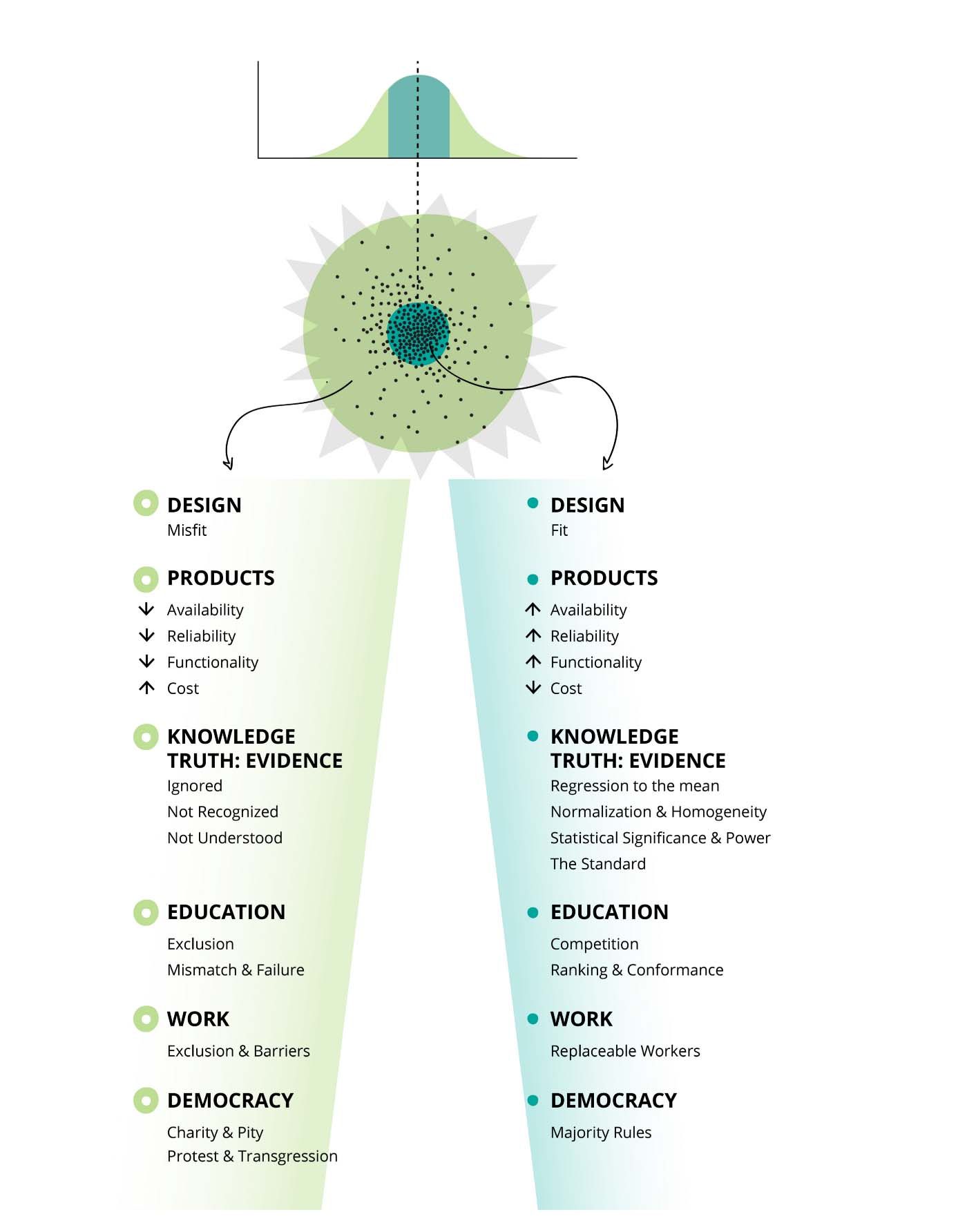
Applications of Pareto and Quetelet’s principles have had the most damaging effect on our notions of evidence, and thereby: knowledge and truth. We have equated evidence and truth about human beings with statistical significance, meaning what roughly holds true for the more uniform or average 80%. In fact, we have designed the favored research methods in such a way that the methods cannot be used on the 20%, or the 80% of the research terrain they cover. The conditions of the sanctioned research methods are that the group that is studied be homogeneous, that the context be controlled, and the factors isolated. This works for the 80% that cluster around the average. The 20% are anything but homogeneous and their context is never predictable or controlled.
This has an impact not only on the 20% at the margins but on any researcher that may wish to study them or their truth. The researcher will not achieve statistical significance. This means the work is less likely to be published in high-impact academic journals. This means they are unlikely to get tenure in a university or college. They are less likely to be promoted. They are less likely to receive research funding. This means that the 20% at the margins are less likely to be recognized, understood or served. This also means we discourage exploring the less-populated 80% of the research terrain, resulting in dangerous blind spots and knowledge gaps.
The ripple effects of this phenomena to our applications of knowledge are endless: from medical practice that results in death and illness among the 20% due to the misapplication of treatments fit for the 80%; to the inequitable impacts of our investment decisions, insurance practices and security processes on the “difficult 20%”. Lately, we have applied this conventional paradigm (that eschews diversity and complexity) to artificial intelligence, machine learning and Big Data analytics. This amplifies and automates our bias against the “difficult 20%.”It also means our AI systems have difficulty changing contexts and dealing with the unexpected.
Because evidence is being used as a defense against destructive irrational ideologies in our call for evidence-based governance, this interpretation of the 80/20 principle increasingly influences our public planning and policy. We assess the value of any decision or plan by assessing evidence of its impact. The largest impact is deemed worthy. Using this formula, an initiative is worthy of public investment if it has a positive impact on a homogeneous majority. Any initiative (even a critical one) for the “difficult 20%,” will never meet the threshold of value or worth. Reaching an impact threshold to justify investment is made more difficult by the fact that people and needs that occupy the outer edge of the starburst are more different from each other, meaning any one measure cannot muster impact beyond a small minority (and potentially a minority of one).
This phenomena ripples into our systems of formal education which are designed around the idea of standardizing the learning of the average student to produce a replaceable worker. This means that education is a mismatch for you if you find yourself among the “difficult 20%.” You are either excluded or relegated to “special education.” Anything “special” is most vulnerable to budget, time, and resource constraints or cuts. Needless to say, our systems of employment filter you out and are not designed for you if you are part of the “difficult 20%.” At best, our equity efforts set you up for failure by recruiting you into work situations that were not designed for you.
As democracy has come under threat, we have defended it by applying the same principle. We have reduced it to “majority rules”; and downplayed the protection of rights and freedoms for everyone. This only adds to the vicious cycle experienced by all the minorities who are excluded from the well-populated center of the starburst.
What are we missing?
It cannot be denied that Pareto landed upon a recurring and instructive natural phenomenon, but I would argue that we have misapplied the insight. Pareto initially discovered that 80% of the land in Italy was owned by 20% of the citizens. These 20% of the citizens have been dubbed the “vital few” in the Pareto distribution, which also holds that 20% of the factors cause 80% of the effects. Pareto focused on ownership, wealth and influence in the popular center of the distribution. His principle has been applied to satisfy greed and in the quest for power and influence. Like any tool, it can be exploited for many purposes.
Pareto, Koch and others ignored the application if the principle to experience, insights and perspectives. Our popular applications of the lessons of this natural phenomenon have led us to ignore a critical “vital few,” namely the individuals that have been dubbed the “difficult 20%,” who have the greatest lived experience of difficult terrains. The conventional application has resulted in disparity, inequity, and fragmentation. Because we have marginalized the “difficult” vital few, we have not learned to understand and navigate diversity and complexity away from the conventional and more homogeneous middle.
It is in this 80% of the knowledge terrain, occupied by 20% of our marginalized humanity, that we find innovation, and unexpected disruptive influences. Here is also where we will find the approaches for sustainability, responsiveness and dynamic resilience. To venture into this terrain, we require people with experience in dealing with diversity and complexity. It is the “vital few,” misidentified as the “difficult 20%” that are our best guides. Not only because they have needed to practice unusual resourcefulness on a daily basis, but also because, to survive, they have needed to foster social cohesion across diversity. This terrain is not a place for competition, it is a place for collaboration and for weaving together the collective effort of as broad a diversity of skills and perspectives as possible.
This is the territory that we explore as inclusive designers. Rather than ignoring the “difficult 20%” we recognize them as the “vital few.” A phenomenon that Pareto and Koch missed is that if you design a system to stretch to encompass the occupants of the outer terrain of our human starburst, you create a system that is better for everyone. It is inevitably more innovative, responsive, agile, and generous. It is better at handling change and the unexpected.
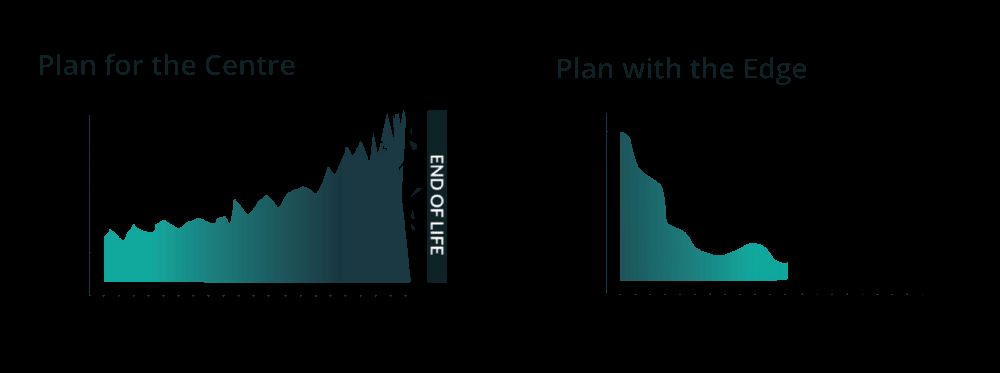
The vital few cover 80% of the terrain, meaning that they bring 80% of the currently missing insights. If we hope to save costs in the long run, working with the vital few to address their needs from the start means we create a system that can weather contextual changes, does not need to be retrofitted to address excluded needs, and thereby costs less in the long term.

At the IDRC we use the Inclusive Design Mapping Toolto chart our progress to the frontier at the edge of the starburst. We use it to measure the distance we have traveled, and the distance we have yet to cover in stretching our designs to the jagged edge of the starburst of human requirements. Our signposts and guides are the “vital few,” the criteria and challenges are their unmet needs.
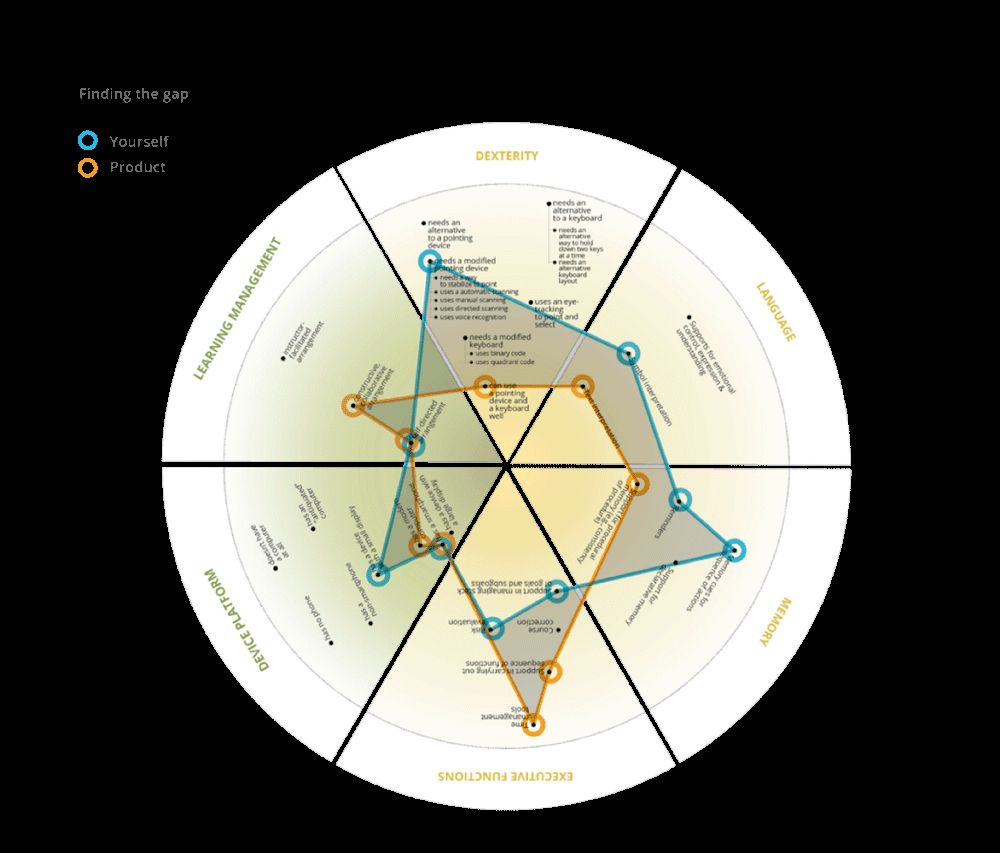
The 80% of the space and effort outside the conventional middle is a vast and shifting terrain, that cannot be reached in a straight line. It is to be approached with humility and without the hubris of predetermined assumptions and presumptions. We do not venture here armed with a hypothesis. Here a linear logic model does not work.
We use the Virtuous Tornado as our planning tool, iterating further and further to the edge, constantly re-calibrating and evaluating our progress, and asking “who are we missing” to recruit the necessary knowledge and lived experience we need.
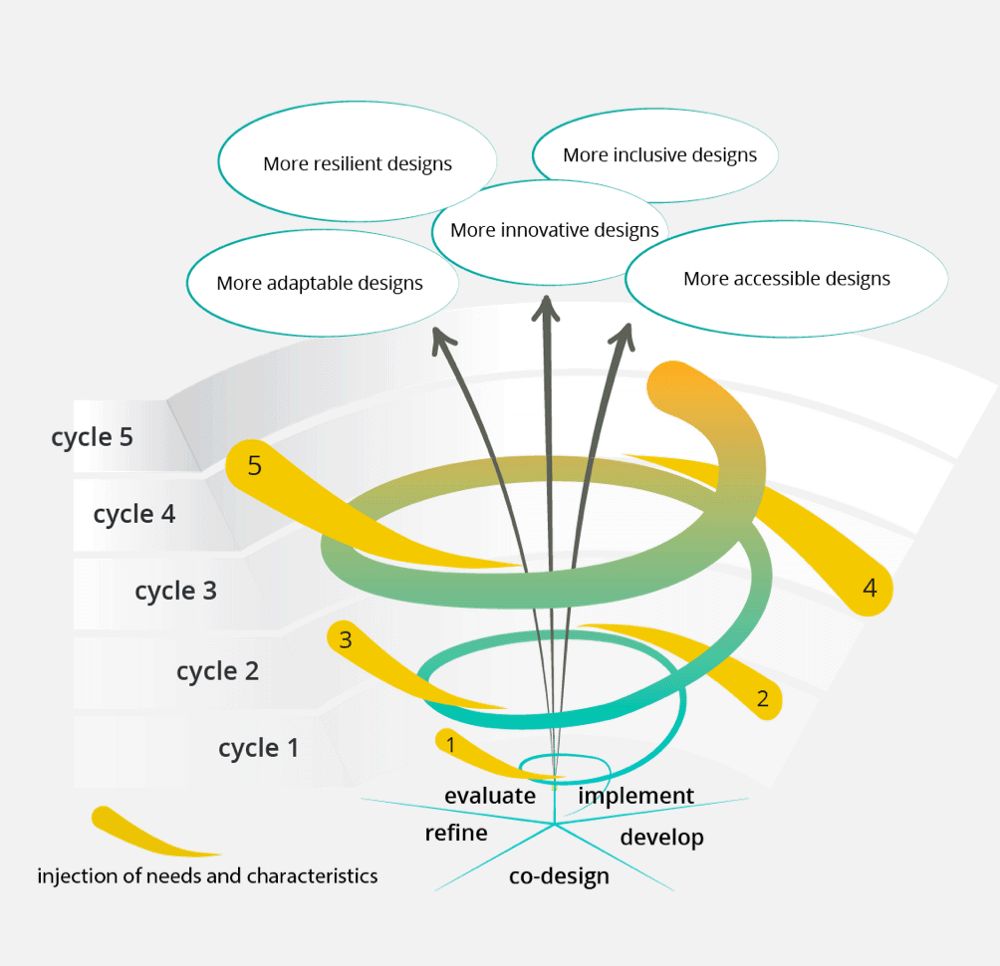
Here our failures and mistakes are often more valuable than our successes for charting our course. Formulas do not hold. It is the terrain of entangled complex adaptive systems that are impervious to simple fixes. Categories, labels, and singular notions of quality and rigor often do more harm than good. Value is not assessed based on popularity, but on whether it works for the most vulnerable among us.